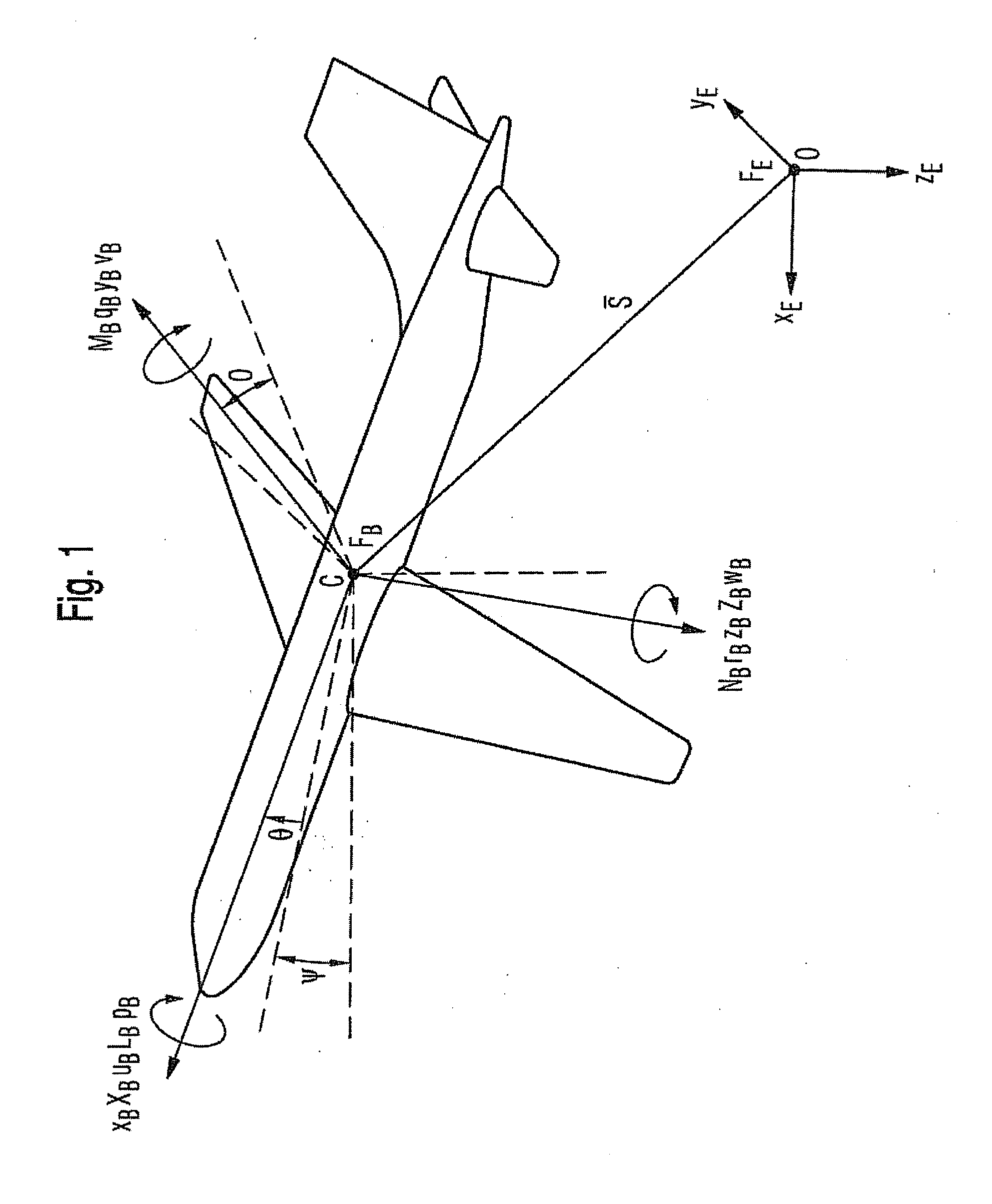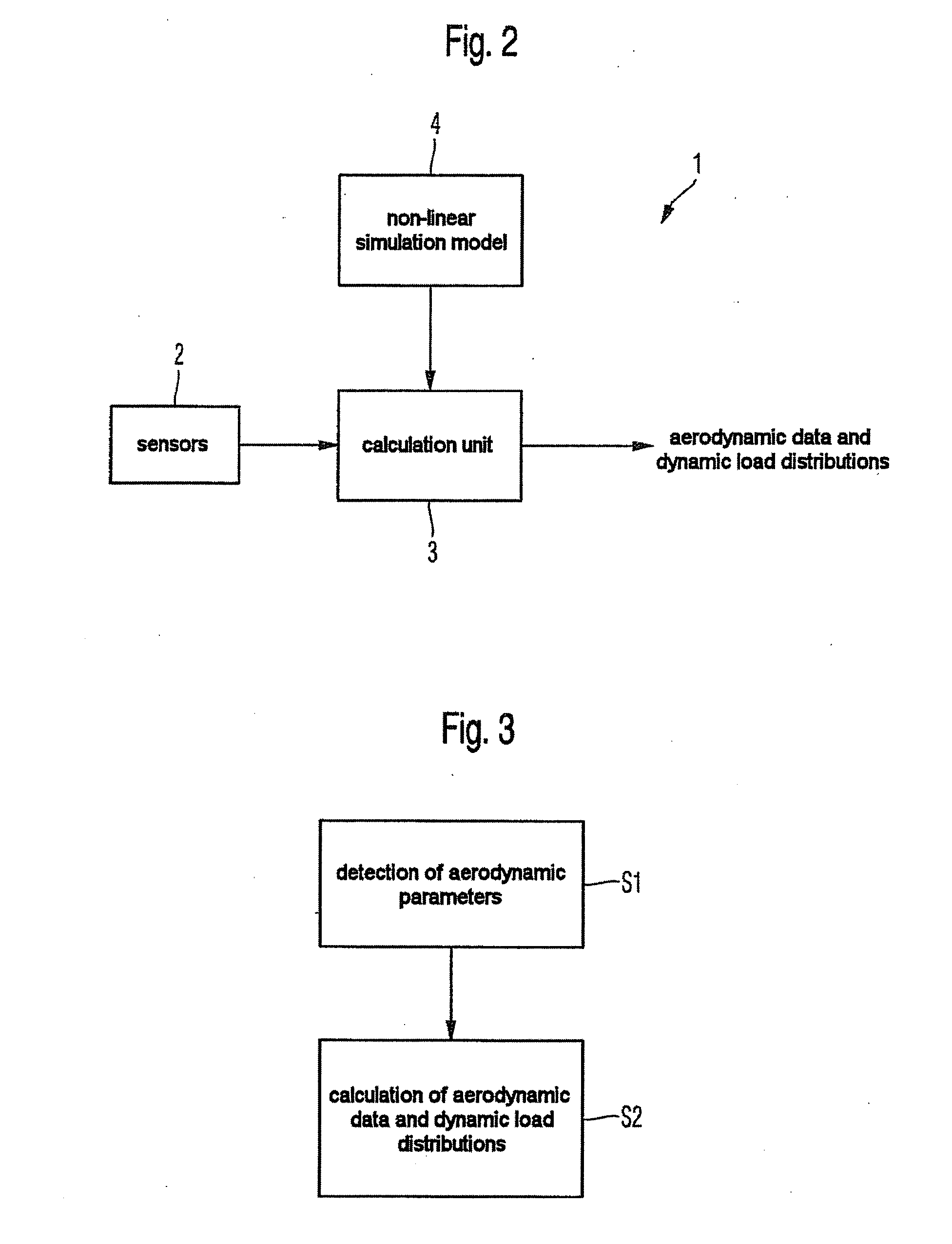System and method for determining local accelerations, dynamic load distributions and aerodynamic data in an aircraft
a technology of dynamic load distribution and aerodynamic data, which is applied in adaptive control, instruments, computing, etc., can solve the problems of relatively complex structural load and acceleration of aircraft, and the conventional method, which is based on global aerodynamic coefficient, is therefore relatively inaccurate, and achieves high accuracy
- Summary
- Abstract
- Description
- Claims
- Application Information
AI Technical Summary
Benefits of technology
Problems solved by technology
Method used
Image
Examples
embodiment 1
2. The system , wherein the calculation unit calculates characteristic variables of passenger comfort, cabin safety and movement variables of aeroelastics and flight mechanics on the basis of the non-linear simulation model as a function of the detected aerodynamic parameters.
3. The system according to embodiment 1, wherein the steady aerodynamic data including aerodynamic distributions are measured directly and structural loads and accelerations are ascertained as a function of this measured data.
4. The system according to embodiment 1, wherein steady and unsteady aerodynamic data including steady and unsteady aerodynamic distributions are measured and identified directly and indirectly, and structural loads and characteristic variables of passenger comfort and cabin safety are ascertained as a function of this measured data.
5. The system according to embodiment 1, wherein some of the steady aerodynamic data, structural loads and accelerations are measured directly and, as a functi...
embodiment 6
9. The system , wherein the calculation unit minimises the interference vector for the aerodynamic parameters by means of a numerical optimisation method.
embodiment 7
10. The system , wherein the numerical optimisation method is a maximum likelihood method.
11. The system according to embodiment 6, wherein the calculation unit automatically adapts the non-linear simulation model as a function of the calculated differential vector for the aerodynamic parameters.
12. The system according to embodiment 1, wherein the aerodynamic parameters and / or the structural loads are detected via sensor by pressures.
13. The system according to embodiment 1, wherein the aerodynamic parameters and / or the structural loads are detected via sensor by the deformations of structural components or by mechanical forces acting on structural components.
14. The system according to embodiment 1, wherein the non-linear simulation model is stored in a memory (4).
15. The system according to embodiment 1, wherein the stored non-linear simulation model comprises non-linear differential equations.
PUM
 Login to View More
Login to View More Abstract
Description
Claims
Application Information
 Login to View More
Login to View More - R&D
- Intellectual Property
- Life Sciences
- Materials
- Tech Scout
- Unparalleled Data Quality
- Higher Quality Content
- 60% Fewer Hallucinations
Browse by: Latest US Patents, China's latest patents, Technical Efficacy Thesaurus, Application Domain, Technology Topic, Popular Technical Reports.
© 2025 PatSnap. All rights reserved.Legal|Privacy policy|Modern Slavery Act Transparency Statement|Sitemap|About US| Contact US: help@patsnap.com



